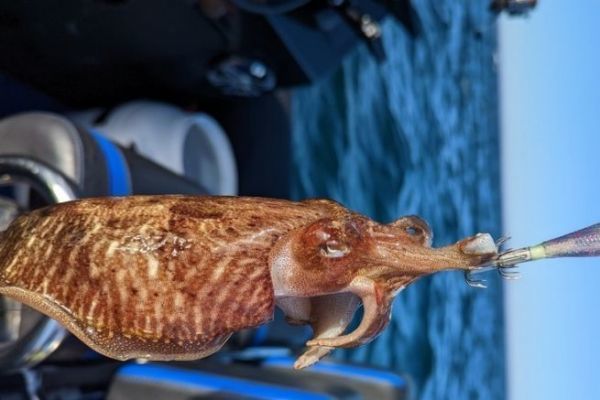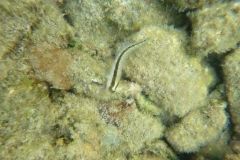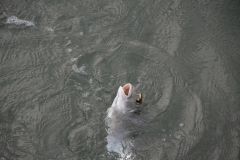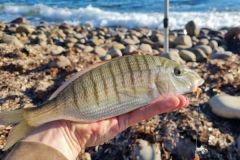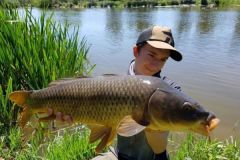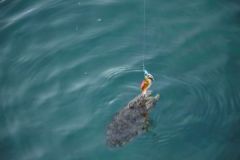Why fish for cuttlefish from the shore?
The cuttlefish (Sepia officinalis) is a fascinating cephalopod, as tasty as it is technical and fun to catch. Unlike squid, cuttlefish are mainly caught close to the coast, making them accessible to all, even without a boat. In autumn and early winter, cuttlefish move closer to shallow areas to breed and hunt, offering an ideal fishing window for amateurs.
3 reasons to target cuttlefish
- Accessibility: you don't need to go out to sea, a simple walking stick is all you need.
- Yield: a single outing can yield 5 to 10 cuttlefish (depending on the spot).
- Cuisine: tender, low-calorie flesh, perfect for Mediterranean recipes (e.g. cuttlefish a la plancha, ink risotto).
Where to fish for cuttlefish from shore? The best spots
Key areas to target
Cuttlefish like sandy or muddy bottoms, between 2 and 10 meters deep, close to structures that offer them shelter and food (crabs, small fish). Here are the 5 types of spots to choose:
| Spotlight type | Why does it work? | Best moment |
| Sandy beaches | Cuttlefish bury themselves in the sand to hunt. The sand is full of prey that cuttlefish love | Rising tide, falling night |
| Ports and dikes | Calm waters, rich in prey, under lampposts illuminating the water | Deep-sea slack water |
| Estuaries | Mixture of fresh and salt water = concentration of cuttlefish because of hunting area | 2 hours before high tide |
| Posidonia meadows | Natural hiding places but also egg-laying sites | Day with little wind |
| Wrecks and rocks | Predator shelter and food storage | Ebb tide |
Local tip: cuttlefish love the areas between oyster beds. Fish at low tide with a light jig (10âeuros15 g) to avoid snagging.
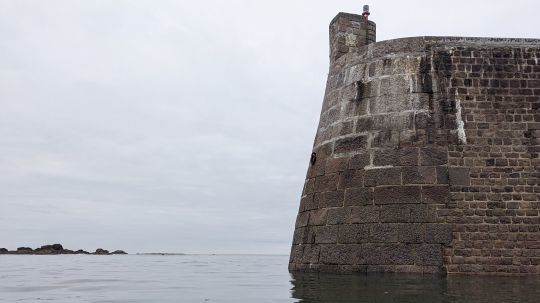
Choosing your jig: Models, sizes and colors
The jig is the ultimate cuttlefish fishing weapon. Here's how to choose the right jig:
The 3 types of jigs to have in your box:
| Type | Weight | Color | When to use it | Recommended model |
| Lightweight jig | 10âeuros20 g | Neon pink/Green | Calm waters (< 5 m), daytime. | Ebika 3.5/135 shallow sinker(~9 ?) |
| Heavy jig | 30âeuros50 g | Orange /Red | Strong currents, night. | |
| Phosphor turlutte | 15âeuros25 g | Bright green/yellow | Night fishing or rough waters. | Savage Gear Glow (~18 ?) |
Color details according to conditions
- Clear water: fluorescent pink or translucent (imitates shrimp).
- Cloudy water: orange or red (better contrast).
- Night: phosphorescent (cuttlefish are attracted by light).
Did you know? Cuttlefish have highly developed vision and detect rapid movement. A jig that shakes or spins is 10 times more effective than a static jig. So let's take a look at how to animate them.
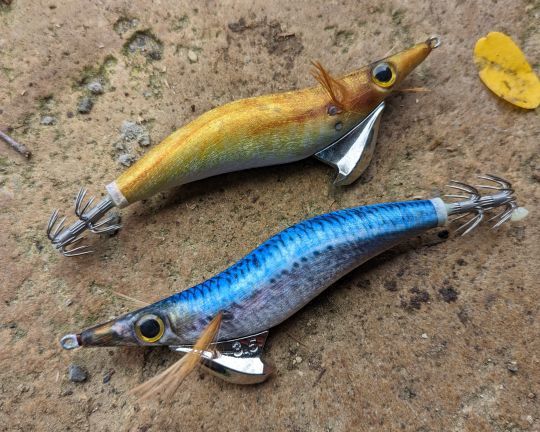
Animation techniques: How to get people to bite?
The basic technique: slow jigging
Casting: cast your jig 10-15 m from the shore (avoid snagging).
Let it sink: wait for the jig to touch the bottom (count 3âeuros5 seconds).
Animation :
Phase 1: short shakes (20 cm high) to imitate a jumping shrimp.
Phase 2: let the jig come back down while shaking (the jig must turn on itself).
Phase 3: 2âeuros3-second pause at the bottom â the cuttlefish often attacks at this point.
Tackle: as soon as you feel a tug (not a clean touch like a fish), tack gently by bringing the rod up.
Night fishing: adaptations
Lighting: use a red headlamp (does not scare cuttlefish).
Turlut: phosphorescent (e.g. Yamashita Egi-Q Glow). Light attracts cuttlefish
Animation: slower than during the day (cuttlefish are less active).
Tips for animating your jig
The yo-yo technique works well in strong currents. Your lure needs to move a lot in the water, like a shrimp or a bouquet fleeing.
Add a piece of shrimp to the basket (a set of spikes acting as hooks). No shrimp? no problem, feel free to add attractants to the fabric of your jig.
Fish at ebb tide: cuttlefish follow the current to hunt.
Cuttlefish fishing from shore is accessible, fun and rewarding. With the right spots, the right jigs and the right animation, you can have fun looking for cuttlefish.

 /
/ 